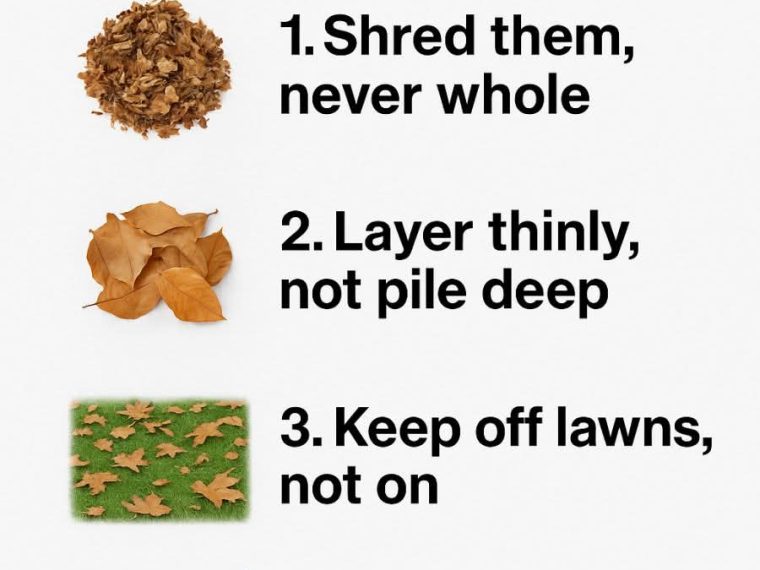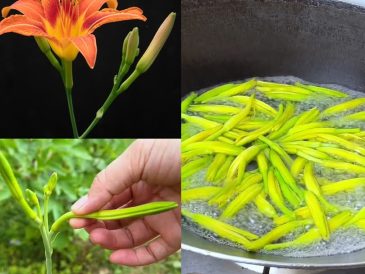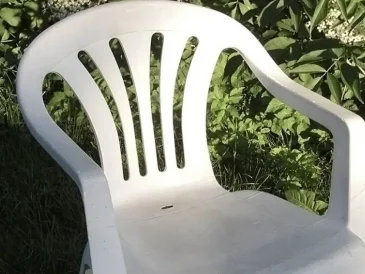As the autumn leaves begin to fall, many homeowners find themselves overwhelmed by the sheer volume of leaves carpeting their yards. The instinctive reaction is often to rake them up, bag them, and set them out for waste collection. However, this approach overlooks the untapped potential of fallen leaves as an invaluable resource for your garden and home.
Instead of viewing leaves as a nuisance, consider them as a gift from nature. When used correctly, they can enrich your soil, protect your plants, and even enhance the beauty of your landscape. In this article, we will explore the right ways to utilize fallen leaves during the winter months, turning what many consider waste into a beneficial asset.
1. Understanding the Value of Fallen Leaves
Fallen leaves are packed with nutrients like carbon, nitrogen, and phosphorus, which are essential for healthy plant growth. When allowed to decompose naturally, they return these nutrients to the soil, enriching it and improving its structure. In fact, leaves contain about 50-80% of the nutrients that a tree absorbs during its lifetime.
Moreover, leaves provide organic matter that enhances soil aeration and water retention. They help create a rich, loamy soil that supports a diverse ecosystem of beneficial microorganisms. By understanding the intrinsic value of fallen leaves, you can leverage them to boost your garden’s productivity.
2. Shred Them, Never Whole
Whole leaves, when left on the ground, can create a dense mat that blocks sunlight and air from reaching the soil. This can smother grass and other plants, leading to unhealthy, patchy lawns. To avoid this, it’s crucial to shred the leaves before using them.
Use a lawn mower with a mulching blade or a leaf shredder to chop the leaves into smaller pieces. Shredded leaves decompose more quickly, allowing for faster nutrient release into the soil. Aim for pieces that are about the size of a dime for optimal decomposition.
3. Layer Thinly, Not Pile Deep
When using leaves as mulch or compost, it’s important to apply them in thin layers. Piling leaves too deeply can prevent air and water from reaching the soil, creating an environment that encourages mold and rot.
Spread shredded leaves in layers no thicker than 2-3 inches. This ensures adequate airflow while still providing the benefits of insulation and moisture retention. Thin layers will break down more evenly and quickly, integrating into the soil without smothering it.
4. Keep Off Lawns, Not On
While leaves can be beneficial in garden beds and around trees, they should be kept off your lawn. A thick layer of leaves on grass can block sunlight and air, leading to dead patches and an unhealthy lawn.
Regularly rake or blow leaves off your lawn, especially if they’re accumulating faster than they can decompose. Use these collected leaves as mulch or add them to your compost pile, where they can decompose without harming your grass.
5. Mix in Compost, Not Bag and Toss
Instead of bagging leaves and sending them to the landfill, mix them into your compost pile. Leaves are a great source of carbon, which is necessary for balanced composting. Combine them with nitrogen-rich materials like grass clippings and kitchen scraps for optimal decomposition.
A balanced compost pile should have a ratio of about 3:1 carbon to nitrogen. By adding leaves to your compost, you enhance its nutrient content and improve the quality of the finished product, which can be used to fertilize your garden.
6. Mulching for Garden Beds
Shredded leaves make excellent mulch for garden beds. They help retain soil moisture, suppress weeds, and regulate soil temperature, protecting plant roots from extreme cold.
Apply a 2-3 inch layer of shredded leaves around perennials, shrubs, and trees to insulate roots and maintain consistent soil moisture levels. As the leaves break down, they will add organic matter and nutrients back into the soil, supporting healthy plant growth.
7. Creating Leaf Mold for Soil Enrichment
Leaf mold is a type of compost made solely from decomposed leaves. It’s an excellent soil conditioner, improving soil structure and water retention. To make leaf mold, simply pile up shredded leaves in a corner of your yard and let them decompose over time.
Turn the pile occasionally to speed up the process. In about 6-12 months, you’ll have a rich, crumbly material that can be mixed into garden soil or used as mulch. Leaf mold is particularly beneficial for clay or sandy soils, as it enhances their texture and fertility.
8. Protecting Root Zones with Leaf Insulation
During winter, plant roots can be vulnerable to freezing temperatures. Shredded leaves can be used as an insulating layer over root zones to protect them from frost.
Apply a 4-6 inch layer of shredded leaves around the base of trees, shrubs, and perennials. This insulation helps maintain a stable soil temperature, preventing roots from freezing and thawing cycles that can cause damage.
9. Enhancing Wildlife Habitats
Leaves also play a crucial role in supporting wildlife. They provide habitat and shelter for beneficial insects like ladybugs and ground beetles, which help control pest populations in your garden.
By leaving some areas of your yard with a light covering of leaves, you create a haven for these creatures. Additionally, leaves provide food and nesting material for birds and small mammals, supporting biodiversity in your garden.
10. Crafting Natural Decorations
Fallen leaves can be used to create beautiful, natural decorations for your home. Use brightly colored leaves to make wreaths, garlands, or table centerpieces that add a touch of autumn charm.
Press leaves between sheets of wax paper and iron them to preserve their color and shape. Once dried, they can be used in a variety of craft projects. This creative use of leaves not only beautifies your living space but also reduces waste.
11. DIY Leaf-Based Fertilizers
Leaves can be transformed into a nutrient-rich fertilizer by making leaf tea. Fill a large container with shredded leaves and cover them with water. Let the mixture steep for a week or two, stirring occasionally.
Once the leaves have broken down, strain the liquid and use it to water your plants. This leaf tea provides a gentle, organic fertilizer that nourishes your garden without the use of synthetic chemicals.





